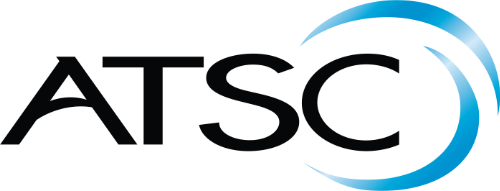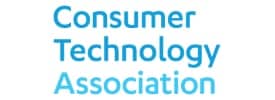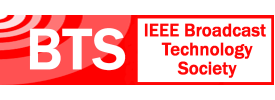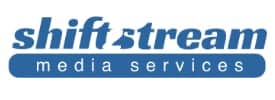- About
- Members
- Sponsors
- Subcommittees
- About Our Subcommittees
- Technology Group 3
- Implementation Team 1 – Advanced Emergency Information
- Implementation Team 2 – India
- Implementation Team 3 – ATSC 3.0 Conformance
- Implementation Team 4 – Brazil
- Implementation Team 5 – Tower Network
- Implementation Team 7 – Caribbean
- Implementation Team 8 – Automotive
- Planning Team 4 – Future Broadcast Ecosystem Technologies
- Planning Team 5 – Automotive Applications
- Planning Team 6 – Global Recognition of ATSC 3.0
- Planning Team 9 – Sustainability
- Technical Documents
- News
- Events
- Spotlight ATSC 3.0
- Contact Us
- Member Login
- Member Meetings
- Advanced Search
Search Site
Member Links
- About
- Members
- Sponsors
- Subcommittees
- About Our Subcommittees
- Technology Group 3
- Implementation Team 1 – Advanced Emergency Information
- Implementation Team 2 – India
- Implementation Team 3 – ATSC 3.0 Conformance
- Implementation Team 4 – Brazil
- Implementation Team 5 – Tower Network
- Implementation Team 7 – Caribbean
- Implementation Team 8 – Automotive
- Planning Team 4 – Future Broadcast Ecosystem Technologies
- Planning Team 5 – Automotive Applications
- Planning Team 6 – Global Recognition of ATSC 3.0
- Planning Team 9 – Sustainability
- Technical Documents
- News
- Events
- Spotlight ATSC 3.0
- Contact Us
- Member Login
- Member Meetings
- Advanced Search
NEWSFLASH: Panel Examines Road to ATSC 3.0 and Repack
Posted on March 5, 2018 in ATSC News
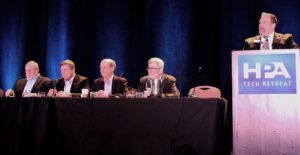 By James O’Neal, TV Technology
By James O’Neal, TV Technology
PALM DESERT, Calif. – Broadcasters at last month’s HPA (Hollywood Professional Association) Tech Retreat discussed two timely television technical topics: the introduction of the ATSC 3.0 DTV transmission standard and the on-going TV spectrum repack initiative.
COOPERATION IS KEY
The “Broadcasters Panel” included Dave Siegler, vice president of technical operations for the Cox Media Group; Del Parks, senior vice president and chief technology officer for the Sinclair Broadcast Group; Skip Pizzi, vice president of technology education and outreach at the NAB; and Fox Network’s Rich Friedel, who also chairs the Advanced Television Systems Committee’s board of directors.
Matthew Goldman, Ericsson senior vice president of technology and SMPTE president, moderated the session and kicked off the discussion by asking the group to talk about the current status of ATSC 3.0.
“The good news is that the standard has been released and the government has allowed us, on a voluntary basis, to broadcast ATSC 3.0,” said Friedel. “Things are very exciting in ‘ATSC land.’ It’s really real and you’re going to see it on the air.”
THE ADVANTAGES OF MOVING TO ATSC 3.0
Goldman quizzed the group about what they considered to be the single best feature of the new standard and if its implementation was related to the on-going TV spectrum repacking operation.
“There are so many features associated with ATSC 3.0, so it’s hard to pick out just one,” said Pizzi. “But in the early term I would say greater transmission efficiency combined with more robustness. It’s going to allow broadcasters to do more in the same amount of spectrum and at the same time provide higher quality.”
“I would say it’s the marriage of broadband and over-the-air broadcasting,” said Friedel. “Consumers will be able to get an internet type of experience combined with television.”
As for the tie-in between ATSC 3.0 and the repack, the panel agreed that while there was no direct connection, the timing of events was such that they could be coordinated in such a way as to provide introduction of 3.0 signals in a market as the channel changing is taking place.
“They’re not really related,” said Siegler. “But the coincidence of the timing is a good opportunity for broadcasters to make changes, including addition of 3.0,” noting that coordination and cooperation between broadcasters would be important elements in making both transitions happen. “It’s really an aggressive plan, but you have to start somewhere.”
MAKING THE TRANSITION HAPPEN
Parks acknowledged the challenges in store for broadcasters in achieving the joint goal of shifting channels and rolling out ATSC 3.0, but observed that there has been a long-standing spirit of technical cooperation among broadcasters, even those who are business competitors.
“The engineering departments in broadcasting have had a traditional role in cooperation,” he said. “Many of us are on the same towers and sometimes there are opportunities to use common antennas.”
He added that as the repack and its relatively short deadline for completion was occupying a lot of engineering time and vendor resources at stations and within station groups, it may be challenging to make the move to ATSC 3.0 at the same time….
“It is very tricky. The government is taking spectrum away and has sold it, so we’re being repacked in a smaller amount of spectrum and at the same time we’re talking about how to deploy 3.0. The most popular approach put forward is to use channel sharing on one or two ATSC 1.0 sticks. So broadcasters have to cooperate or there will be no service.”
Goldman then asked the panel to comment on new services that ATSC 3.0 would enable for the consumer.
“I’m most excited about interactivity that comes with the broadband connection,” said Siegler. “This allows so much to be done.”
“With 3.0 and OFDM, you now have this ability for reception in a car while it’s while traveling at 70, 80, 90 miles-per-hour,” said Parks. “The vehicle now is really a big computer and you need to have some way to get broadband to it,” he said, noting ATSC 3.0 would be “a big enabler in this regard due to its IP nature.”
“ATSC 3.0 is the first and, so far, the only IP-based TV transmission standard,” said NAB’s Pizzi. “This could become a real advantage at the end of the day once the transition takes place.”
Reprinted with permission from TV Technology.
Posted in ATSC News
News Categories
News Archives
Subscribe
Subscribe to The Standard, our monthly newsletter. Learn More
Join ATSC
ATSC is a membership organization with both voting and observer categories. Voting members include corporations, nonprofit organizations, and government entities, and they participate actively in the work of ATSC. Observers are individuals or entities not eligible to be a voting member.
Subscribe to our Newsletter
Subscribe to The Standard, our monthly newsletter, to stay up-to-date with ATSC news and events around the world.
Site Links
Contact Us
Advanced Television Systems Committee, Inc.
1300 I Street NW, Suite 400E
Washington, DC 20005
Do you have questions about ATSC?
About ATSC
The Advanced Television Systems Committee, Inc., is an international, non-profit organization developing voluntary standards and recommended practices for digital terrestrial broadcasting. ATSC member organizations represent the broadcast, broadcast equipment, motion picture, consumer electronics, computer, cable, satellite, and semiconductor industries. ATSC also develops digital terrestrial broadcasting implementation strategies and supports educational activities on ATSC standards.
© 2024 ATSC
